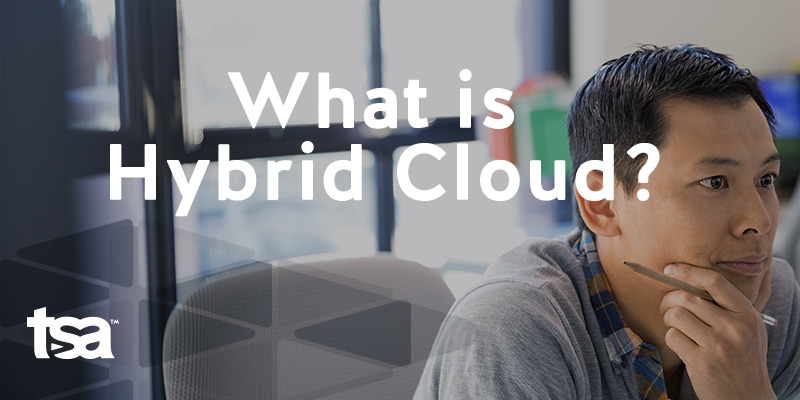You can’t escape hybrid cloud infrastructure right now. You’ll see it on most architecture design documents, and it’s heavily mentioned by HPE on their website and in strategic planning sessions with customers. But “cloud” can be confusing. People use this term so often, and for so many subjects, that it loses much of it’s meaning. So, what is hybrid cloud anyway?
For our purposes, hybrid cloud is a software-controlled, dynamic environment that uses both on-premise equipment and a public cloud to create a single logical infrastructure.
Did we move too far too fast? Let’s clear the confusion…
What is Cloud?
Fortunately, back in 2011, National Institute of Standards and Technology (NIST) gave us a convenient definition of cloud:
“Cloud computing is a model for enabling ubiquitous, convenient, on-demand network access to a shared pool of configurable computing resources (e.g., networks, servers, storage, applications, and services) that can be rapidly provisioned and released with minimal management effort or service provider interaction.”
According to NIST, to qualify as “cloud,” an environment must reflect the following characteristics:
- On-demand self-service.
- Broad network access.
- Resource pooling.
- Rapid elasticity.
- Measured service.
Now that we have a clean definition of “cloud,” what’s that hybrid part? Well, it’s all about where you choose to host this cloud-style architecture.
On-premise vs. Off-premise
On-premise cloud, often referred to as private cloud, enables your company to deploy an application within a datacenter that you directly manage. Organizations often use on-premise hosting when either security, control, or TCO drive the design decision.
Off-premise cloud, typically a public cloud1 like AWS or Azure, enables your company to most directly take advantage of the rapid elasticity that cloud provides. But that flexibility comes at a price premium. When organizations want to prioritize initial cost of entry and flexibility, they often use off-premise hosting.
Hybrid cloud bridges these locations and enables you to create a blend of hosting solutions to meet the specific needs of your business. Exactly what those needs are, and the best distribution of public and private cloud can differ depending on your industry and particular goals. We recommend that you engage one of our Solutions Architects before making a significant investment.
Common Misconceptions
It’s not hyper-converged, but it could be.
In some conversations we’ve seen, the hybrid vs. hyper-converged debate has been a little bit confusing. We want to be clear: the underlying hardware does not define the cloud. You can use hyper-converged architecture, Blade servers with rack switches, traditional 1U pancakes, or even larger servers to build these environments. The hardware that you use to build a cloud does not change the definition. Cloud definitions (private, public, hybrid, etc.) are decided by where it’s hosted and who manages the hardware.
It’s not Containerization or Virtualization, but that’s part of it.
HPE now includes Docker on every server that they ship. While this feature has a lot of benefits, Docker by itself is not hybrid cloud. Containers like Docker and virtualization software like VMware and Hyper-V support enable many of the functions of a cloud, but as you can see in the NIST definition, they are just one piece of the puzzle that enables the entire environment.
So, Why Would You Want a Hybrid Cloud Infrastructure?
You know, that’s a great question. Hybrid cloud offers the advantages of flexible scalability and the security of hosting some data on wholly owned infrastructure. Curious about the type of architectures available? See our post on choosing the right platform.
Trying to decide on the best hosting methods for your next deployment? Let’s analyze it together.
- It could also be implemented in a semi-private, community cloud, but that’s beyond the scope of this article. ↩

